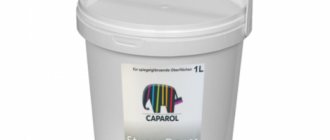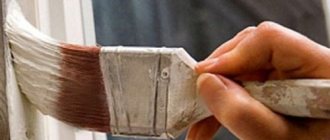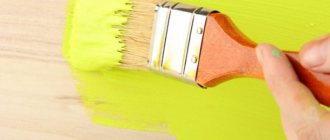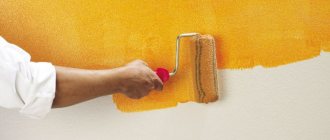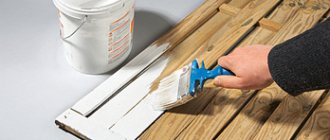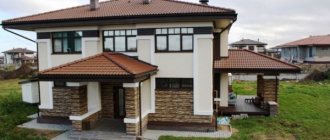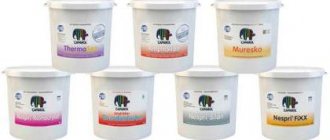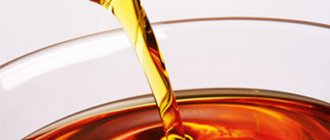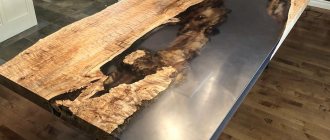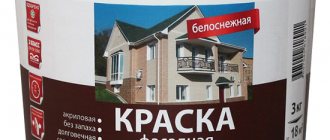How to calculate paint consumption? Caparol
Hello everyone Those who have painted with Caparol paints are especially interested in Capasilan, Samtex 7, 10 and Amphibolin. What is their real consumption and what kind of surface does it produce? On a can of Kapasilan, for example, the consumption is indicated as 0.14, but on some sites and in a couple of reviews they write that the consumption is less - 0.12 How to correctly calculate the paint consumption for 2 layers? Surface - putty + primer. And what is the best primer to choose to reduce paint consumption? Can they thin paint?
I'll start from the end. Never thin paint with primer. The resulting composition will be worse than pure paint and it is also not applicable as a primer. Verified. The stingy one pays. The consumption rate is written on the can - 7 sq.m. liter. This means that if you roll the paint over a large area, the coverage will drop to an unacceptable level, i.e. the surface will be translucent. In reality, they think like this: amount of paint in liters = ((your area x 2 layers) + 10% of the reserve)/7 sq.m. Well, they round up according to the container size.
Alexey_B_1335426, with breeding it’s clear. What about primer for walls? I mean what kind of primer can fill the pores well in order to reduce absorption as much as possible, but not so much that the adhesion of the paint to the wall is zero. Have you heard about dufou?
I want to choose capasilan, in particular, for its high coverage even in 1 layer. But I also need good performance properties, so I will paint in 2. It is unlikely that this paint will have problems with baldness. It’s just that in the online store where you were going to buy, one expense is indicated, on the bank - another, reviews confirm the first. So I'm interested in the actual consumption
Sergey, I also heard about the dufu and mostly with obscenities. At a consumption rate of 7 meters per liter, the paint layer turns out to be very thick - of course, it covers it in one layer. It’s just that most paints have a consumption rate
12-14 squares and quite good coverage with one layer is also good. In general, the hiding power of the paint is determined by the degree of grinding of titanium dioxide (titanium white) - the smaller the particles, the better the hiding power, and therefore a thin layer of paint is enough to paint over the surface. If the paint must be applied in a thick layer, then its hiding power is not very good. There are a lot of primers and most are quite ok. Ceresit, VGT, Marshall, Dulux, Caparol - they produce quite good primers.
Alexey_B_1335426, this is a paint based on silicone resins, class 1 hiding power. How many videos and reviews have I watched - the paint covers the surface in 1 layer and at less consumption than indicated on the can. But I also need strength from it. I read long and stormy threads on the topic of consumption, but I still didn’t fully understand: if the consumption on the can is 140 ml (perhaps actually 120 ml) with 1 class of hiding power, abrasion, etc., how many liters are needed to paint 110 kW .m of wall area in 2 layers? The calculator for Tikkurila paint, for example, gives a value of 25 liters, but its consumption is more optimal (according to the values on the can, 7 sq. m for the first layer and 12 sq. m for the second)
Sergey, Silicone (organosilicon) paint is always based on an organic solvent. If silicone paint is based on water, then it is acrylic with silicone additives. At a consumption rate of 7 sq.m. - for an area of 110 square meters you need 35 liters of paint ((110*2)+10%)/7 = 34.5
35 At a consumption rate of 14 sq.m. — 18 liters At a consumption rate of 17 sq.m. - 15 liters. (yes, there are such paints too) - in Omsk -
About the hiding power class, read the DIN 13300 standard - the paint is applied in the layer prescribed by the manufacturer, i.e. at 7 m2/l we get 143 ml/m2 and at a density of 1.5 it will be 214.0 g/m2 - of course, such a thick layer of paint will cover anything - here you have the first class of hiding power. But apply it in a thin layer, like other paints, and the hiding power will immediately drop down to the fifth class.
PS Good acrylic does not need silicone.
Alexey_B_1335426, I read about this paint with “fantastic” consumption, and everyone in the thread agreed that the paint can be rolled out in any way you like, only the covering power for this 17 sq.m. is not indicated, and with this tempting consumption it will be necessary to apply many layers for an even tone , i.e. such consumption is nonsense. Capasilan has a density of 1.45. I am not a paint manufacturer to decide what to add where. This paint has proven itself very well, and I’m not asking for reviews on it, just help calculate the consumption
Sergey, I calculated the consumption above. Everyone who wrote reviews about 17 sq.m. They didn’t paint it themselves—they just reasoned. (as in that joke about Chaliapin) I also wrote above about the degree of grinding of titanium dioxide. Both coverage and consumption directly depend on it. (pour a handful of rice and a handful of flour onto the table - the table is visible between the grains of rice, and the flour will cover it completely) Of course, not everyone can achieve the manufacturer’s standard consumption with their hands - you need to be a professional. That’s why I recommend a reserve of 10%.
The density of a good water emulsion is 1.4 - 1.5 - if less, then there is a lot of water. (density of water = 1, density of acrylic
1.05 density of chalk - 2.6 density of titanium dioxide 4 - 4.2)
I'm not trying to persuade you to buy anything specific. think for yourself. You can paint anything and everything. I just pointed out that at a consumption of 7 sq. ml, the covering power of any paint will be excellent. But excellent hiding power at a consumption rate of 17 square meters (tested in practice) says a lot about the quality of the paint.
Coating vapor barrier from
offers a unique mastic "GizElast", which traditionally performs the functions of 100% waterproofing, as well as 100% vapor barrier, at affordable prices. The composition is widely used in both industrial and private construction. In order to work with mastic, you do not need to have special professional skills. It is enough just to stir the one-component solution and cover the surface to be treated with it. The material is applied in one, or better yet, in two layers. Consumption is 1-2 kg per 1 m². The composition is suitable for application to flat surfaces - such as walls and ceilings, and for use in sealing seams and joints. This allows you to quickly and easily treat surfaces, making them completely vapor-tight.
In order to achieve maximum effect from the work performed, when choosing materials, you should first of all pay attention to their quality. We offer only the highest quality products
GizElast mastic is always in stock. You can buy it and order delivery right here on the website, or by calling: +7 495 231-9661 Cost: The Technoprok company offers 2 alternative materials for vapor barrier of walls.
- emulsions and mastic compositions (made in Israel), known in Russia as liquid rubber.
- Eurovent roofing films (made in Germany), also known as roofing membranes.
Despite the fact that films are “under-roofing”, they are a traditional material for vapor barrier of walls
. Most builders know only this material and for many it is a revelation that vapor barrier of walls can be done with liquid or paste waterproofing materials.
Vapor barrier of walls with films
If someone prefers to do the vapor barrier of walls the old fashioned way or has the 2 limitations mentioned above, then the Technoprok company offers a wide selection of different diffusion films of the Eurovent brand.
Eurovent diffusion membranes with high vapor permeability are used as an under-roof covering for pitched insulated roofs, as well as for vapor barrier of walls
Eurovent vapor barrier films are products characterized by high mechanical strength, which is one of the key properties for high-quality vapor barrier.
High UV stability (4 months) does not limit the time it takes to complete the work before installing the roof
This is not so important for vapor barrier of walls from the inside, but is a significant factor when installing vapor barrier of walls from outside or when installing vapor barrier of roof
The advantage of Eurovent brand products is, undoubtedly, their durability, confirmed by wear tests carried out in one of the leading laboratories in Germany, Institut für textile Bau und Umwelttechnik GmbH w Greven.
Testing products using simulated wear conditions is one of the requirements of the European standard EN13859-1. This standard applies to materials used as underlayment for pitched roofs.
The Technoprok company presents single-layer and multi-layer membranes and films of German origin, from which you can choose the optimal one for each task. Vapor barrier membranes are designed to protect not only the roof, but also the wall and floor from exposure to vapors, preventing the appearance of fungi, mold and rot in the wood.
Areas of application of vapor barrier LLC Technoprok
In addition to the vapor barrier of the walls
, liquid rubbers, both emulsions and mastics, are the most convenient and reliable materials when proper hydro- and vapor barrier of the floor is required. This is especially true for the first floor, located above the basement or in a wooden house or in a wet room (shower room, bathhouse, laundry room, swimming pool, etc.).
In order for the building to be dry and warm in any weather, it is necessary to carry out roofing work competently and efficiently, one of the conditions of which is the correctly carried out vapor barrier of the roof. The use of liquid rubber for flat roofing is also convenient because it allows you to quickly and efficiently install a vapor barrier layer over a large area.
In order for the vapor barrier of a house to be effective, protect the building from the penetration of moisture from the outside and protect the insulation from exposure to moist air, it is necessary to understand what steam, condensation and dew point are.
Technoprok company specialists will advise you on the use of vapor barriers and wind barriers. In addition, we have very affordable prices for the entire range. In our warehouse we always have liquid rubber and waterproofing mastics, geotextiles and drainage membranes - in short, everything that is necessary for installing a vapor barrier and.
Advantages and disadvantages of façade paint Caparol + finishing features
The appearance of a new or long-built house acquires decorative qualities only after applying the final finishing layer - façade paint.
For some people, its entire value lies precisely in creating a beautiful and neat appearance, while others approach the issue deeper and realize the full value of exterior painting, such as: creating a protective layer that prevents moisture from entering from the atmosphere, ensuring steam escape from wall materials .
Decorative finishing qualities - a pleasant appearance of the house, highlighting its architecture and emphasizing the individuality of the owner.
In any case, an important circumstance is the quality of facade paint, which largely depends on the manufacturer. Let's look at one of them.
Mineral plaster
Judging by the name, you can guess that Caparol mineral decorative plaster basically contains marble chips, cement or lime.
Such products are sold in bags in dry form. The size of the grains used in the composition affects the ability to create a variety of patterns. Typically the diameter of the granules is from 0.5 to 5 mm. The material consumption and surface topography depend on this size. Typically, large granules are used for exterior finishing, and small granules are used for interior repair work.
The disadvantage of such products is the fact that the created surface can be painted only a month after completion of all work.
Features of façade paint Caparol
Caparol is a German brand, widely known in Europe and throughout the world, one of the undisputed leaders in the production of finishing materials.
Products with the famous company logo - the striped elephant - are a recognized leader among similar materials, creating reference samples for all areas of finishing work.
The quality of Caparol products is confirmed by certificates, and the level of requirements of German certification commissions is known for their rigor and thoroughness in determining quality.
Advantages and disadvantages of the material
The advantages of Caparol façade paints include absolutely all of their working qualities:
- Durability and durability of the coating.
- Elasticity, no cracks.
- Vapor permeability, the paint does not peel off from the base.
- Stable color, does not fade in the sun, does not fade.
- High hiding power - the material does not require multi-layer application, a standard two layers are sufficient, with the second mainly serving for greater reliability.
- Economical . Caparol paints have low consumption compared to other samples.
- Caparol products are famous for their environmental friendliness - the composition of the material contains up to 2% solvents, while other manufacturers include up to 50% in their materials.
- No smell.
The disadvantage of Caparol paints is unanimously stated to be the high cost, which is not surprising - a high-quality product does not come cheap.
Slight tendency to become dirty:
High water repellency
Reliable protection against dirt
Even with the strongest solar irradiation, the hard surface does not soften. In addition, reduced swelling due to water also contributes to long-lasting protection against stains. The impact area for dirt particles, fine dust, and biocontaminants is significantly reduced. In addition, when it rains, a thin film of water forms on the surface. This water film covers only the surface without penetrating into the coating, which allows the façade to be completely cleaned and facilitates its rapid drying.
Types of façade paint Caparol
The company is developing all the most promising areas related to finishing materials. This is also true for exterior finishes.
Facade paints from Caparol are produced on different bases:
Thus, there are materials for different types of walls, operating conditions and based on different chemical compositions.
The company is actively searching for and developing new compounds capable of solving problems in various conditions and on various grounds, constantly expanding its range and launching new product lines.
For which surfaces is Caparol suitable?
Caparol facade paints have universal qualities, which means they can be used on all common types of building materials:
- Concrete.
- Plaster (cement, textured, lime, etc.).
- Galvanized metal.
- Wood (not for all compositions, please specify when purchasing).
- Glass wallpaper.
- Rigid PVC.
At the same time, the user has the opportunity to choose a material on a basis that is optimally suitable for his walls, or that best suits any specific operating conditions, if any.
The use of such compositions
Excellent performance characteristics make it possible to use these compositions not only for painting building facades; it is also used for painting metal pipes and heating radiators.
Organosilicate versions OS - 51 - 03 and OS - 12-03 are heat-resistant modifications of coatings intended for use at critical air temperatures.
Among the areas of their application are:
- decorative and protective finishing of brick, concrete, reinforced concrete, asbestos-cement surfaces;
- use for moisturizing surfaces.
According to GOST, all silicate paints are divided into two types:
- for external (facade) work;
- for interior decoration.
You can use such materials for painting ceilings, walls, floors, and other surfaces in corridors, hallways, kitchens, bathrooms, that is, in rooms with high humidity.
You can apply façade paint to the following types of structures:
- metal products and metal structures located inside or outside the building;
- brick and stone masonry;
- unprimed plasters;
- unplaned and pre-treated lumber.
Nuances and finishing technology
Caparol facade paints are applied using conventional technology; no special techniques or application methods are noted.
Procedure:
- Surface preparation . All foreign objects attached to the walls (that are not parts of the structure) are removed.
- Inspection of walls, removal of loose or crumbling fragments . Potholes are sealed with appropriate means (it is optimal to use Caparol products - primers, putties, plaster mixtures).
- The surface is primed , leveling the level of absorption of the entire surface of the wall and fixing the material.
- Paint is applied over the entire surface at a time (using the “wet on wet” method). If the wall surface is too large, the required number of workers should be used to make it possible to cover the entire wall in one go, otherwise the junctions of early and late applications will be noticeable.
- Material consumption on smooth substrates is up to 200 ml/sq.m . It should be taken into account that this value is approximate; when calculating, it must be increased by approximately 20-25% due to losses in surface quality, absorption, etc.
- The next layer can be applied after 12 hours.
- Work should be carried out in suitable weather (dry, without strong wind, preferably without scorching sun, fog or other dampness).
High strength:
Surface strength and durability similar to mineral paints
Excellent: hardness test passed!
Thanks to patented nano-quartz lattice technology, tiny nano-quartz particles are distributed evenly and dry to form a strong three-dimensional lattice structure. This spatial, quartz-reinforced “frame” creates a particularly durable surface.
Facade paint Caparol: characteristics, consumption and prices
A truly reliable exterior coating that is resistant to any weather conditions is Caparol façade paint. What is so special about this brand? We invite you to take a closer look.
Exterior paints Caparol
Caparol facade paints are available in a wide range:
- dispersive,
- silicate (mineral),
- based on silicone resins,
- acrylic based,
- special for eliminating cracks.
The main advantages of facade paint Caparol and its prices within the framework of democratic market positions include the following parameters:
- resistance to atmospheric conditions, even of increased intensity,
- water-repellent properties (DIN-4108),
- possibility of application on plastered, cement-fiber, concrete, galvanized surfaces, as well as over glass wallpaper, wood and rigid PVC,
- abrasion resistance (DIN-53778),
- increased covering power,
- economical: Caparol facade paint consumption is up to 185 mlm 2,
- resistance to disinfectants and liquid cleaning agents,
- lack of diffusion,
- environmental Safety,
Safe for the environment
- no unpleasant odor when drying,
- Possibility of dilution with water,
- resistance to alkaline solutions.
Thin-layer paint Caparol belongs to the “extra” class, has a silky-matte structure, is applicable for any facade work at temperatures from 5 0 C. The paint coating time after priming is up to 12 hours. The drying period is 2-3 days, at normal or low humidity. After work, it is enough to rinse the tools with water.
The application of dark shades under mechanical load can create the appearance of light stripes (a specific reaction of all façade paints in the matte range). In addition, when applied to dense and cold substrates or unfavorable weather conditions (frost, rain, fog), the drying of the paint will slow down, which can lead to the appearance of yellowish, transparent adhesive marks. However, when thoroughly washed with water, they disappear and do not in any way affect the quality of the coating.
Below is information about companies providing Caparol at the best prices.
Facade paint Caparol: characteristics, consumption and prices
A truly reliable exterior coating that is resistant to any weather conditions is Caparol façade paint. What is so special about this brand? We offer
CapaSilan
Application area
For hospitals, nursing homes, hotels, cafes/restaurants, offices, schools and kindergartens, as well as for housing construction.
Properties
- with minimal emissions, without solvents
- without active chalking or matting substances
- long opening time – application without visible traces of joining of individual sections
- high vapor permeability
- SD-value 3
Suitable substrates
Substrate preparation
Mineral plasters of mortar groups PII and PIII : durable plasters with normal absorbency, coatable without pre-treatment. Large porous, lightly sandy, absorbent plasters should be primed with OptiGrund ELF or CapaSol LF.
Gypsum plasters of the PIV : prime with Caparol-Haftgrund. Sand gypsum plasters with sinter and remove dust, apply Caparol-Tiefgrund TB primer.
Gypsum fibreboard: Prime absorbent substrates with OptiGrund ELF or Caparol-Tiefgrund TB. On heavily compacted smooth substrates, apply Caparol-Haftgrund adhesive primer.
Drywall: grind off putty beads and burrs. Fix soft and sanded areas of gypsum putty with Caparol-Tiefgrund TB. Prime with Caparol-Haftgrund, OptiGrund ELF or CapaSol LF. Prime sheets with pigment spots from water-soluble ingredients with Caparol AquaSperrgrund.
Concrete: remove possible separating substances such as chalking and crumbling substances.
Porous concrete: Apply Capaplex primer, diluted 1:3 with water.
Sand-lime brick and sandstone: paint without pre-treatment.
Load-bearing coatings: low-absorbency matte coatings that can be painted without prior preparation. On large surfaces in one plane, you can prime with OptiGrund ELF or CapaSol LF to increase the processing time of the material. Roughen glossy surfaces, varnish and enamel coatings. Apply Caparol-Haftgrund primer.
Coatings without load-bearing capacity: loose paint coatings or plasters based on artificial resins should be removed without leaving any residue. Poorly absorbent smooth substrates should be primed with Caparol-Haftgrund. Large porous, lightly sandy, absorbent plasters should be primed with OptiGrund ELF or CapaSol LF. Mineral paint coatings without load-bearing capacity should be removed mechanically without residue and removed from dust. Prime with Caparol-Tiefgrund TB.
Acoustic elements and plasters: Special care is required when renovating acoustic systems. Please refer to the detailed refurbishment instructions in the Caparol Spray Technology Handbook. The manual can be requested from Caparol. If necessary, seek advice.
Adhesive paints: Wash off thoroughly. Prime with Caparol-Tiefgrund TB.
Unpainted wood-based, embossed or embossed paper wallpaper: Paint without pre-treatment.
Wallpaper that is not firmly in place: remove without leaving any residue, wash off the adhesive and remaining paper. Prime with Caparol-Tiefgrund TB.
Surfaces affected by mold: Wash off mold and fungal deposits with water. Treat surfaces with Capatox or FungiGrund and allow to dry thoroughly. Apply a primer coating in accordance with the type and characteristics of the substrate. For heavily damaged surfaces, finish with Indeko-W, Malerit-W or Fungitex-W. At the same time, comply with legislative and departmental regulations (for example, the procedure for using biologically active and hazardous substances).
Surfaces with nicotine stains, stains, soot or grease: Wash off nicotine stains, as well as soot or grease stains with water with the addition of grease-dissolving household detergents and allow to dry thoroughly. Clean dried water stains using a dry brush. Apply Caparol AquaSperrgrund sealing primer. On heavily soiled surfaces, finish with Aqua-inn Nº1.
Wood and wood-based materials: Coat with water-borne and environmentally friendly acrylic or polyurethane-reinforced enamel from the Capacryl series.
Small defects: after appropriate preparatory work, repair with Caparol-Akkordspachtel in accordance with building regulations and prime.
Application method
Designed for application by brush, roller or airless spray equipment.
Airless spraying: Spray angle: 50° Nozzle: 0.021–0.026″ Pressure: 150–180 bar Wash working tools with water immediately after use.
Coating structure
Prime and intermediate coat with CapaSilan diluted with a maximum of 10% water
the final coat with CapaSilan diluted with a maximum of 5% water.
Consumption
OK. 140 ml/m2 per 1 layer on a smooth base. On rough surfaces it is correspondingly greater. The exact consumption is determined by trial application.
Conditions of use
Drying/drying time
Comment
When applying by airless spraying, mix the paint well and pass through a sieve.
When using Caparol-Tiefgrund TB indoors, a typical solvent odor may be emitted. In this regard, provide good ventilation. For sensitive areas, use the aromatic-free and low-odor AmphiSilan-Putzfestiger. To minimize the risk of streaking and texture differences, we recommend carefully rolling out freshly applied paint with a medium-nap roller that does not pick up material around the edges (e.g. Rotanyl 18 jn Rotaplast).
Caparol paint consumption per 1 m2
Owners who decide to renovate their living space with their own hands may face the problem of calculating future paint costs. How much paint will you need to buy for a given area?
Let's try to answer this question. Paint consumption is usually calculated per square meter. Let's give an example of calculating the most common and affordable water-dispersion moisture-resistant paint. On average, to paint interior walls, you will need at least 150 grams. per 1 sq. m. wall surface. To carry out external work (painting the facade, for example), you will need about 200 grams per square meter. m. surface.
Another popular paint, often used in repair work, is pentaphthalic enamel (index PF-115). The consumption of this type of paint when applied in one layer to unpainted walls will be about 200 grams per 1 square meter. m. If the wall surface has already been painted, the paint consumption in this case will be less - 150 grams per square meter. m. To apply 2 layers of paint on an unpainted surface, you will need about 250 grams of substance per square meter. m.
In addition, manufacturers leave indicators on paint labels that can be used to calculate paint consumption for perfectly smooth surfaces with average absorbency. For those who are not sure of the calculations, we advise you to add one extra can of paint to the resulting result. Unused building materials, with intact branded packaging, can now be returned to the store without difficulty.
Some practical tips for those who decide to paint the walls themselves:
- Use a spray gun. With it, paint consumption is the most economical. The roller consumes more paint, and the brush consumes even more paint.
- Concrete, brick and plaster surfaces require 10-15% more paint than other surfaces.
- Paints and their advantages: oil paints are inexpensive, acrylic paints are environmentally friendly, silicone paints are durable, enamel paints are quick-drying, water-based paints are easy to use.
- If you are choosing paint for the facade, then ask whether this paint contains antibacterial additives. If they are not there, then you will have to buy and use an antifungal primer.
Caparol paint consumption per 1 m2
Owners who decide to renovate their living space with their own hands may face the problem of calculating future expenses.
conclusions
After completing the calculations, you can buy paint and begin painting the walls. But there are some recommendations that should be followed.
If a two-layer application is necessary, an important point is taken into account: the absorbency of surfaces decreases with each new layer, so consumption decreases.
The results of all of the above calculations are obtained in liters/kilograms. In final calculations, everything can be reduced to common units of measurement to obtain the desired value.
